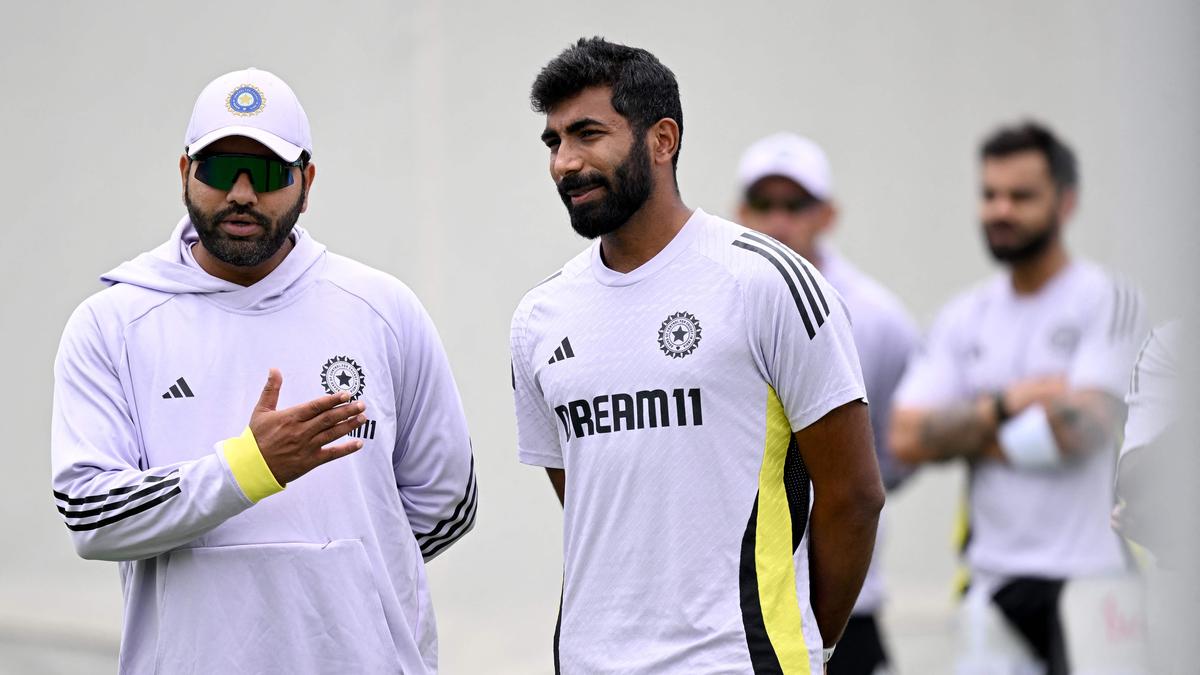Border-Gavaskar Trophy review: Reality check for Rohit Sharma’s men as transition beckons


Border-Gavaskar Trophy review: Reality check for Rohit Sharma’s men as transition beckons
The ball cannoned into the billboards, and with that, a southern summer of cricket found its concluding note under the skies Down Under. Beau Webster had just essayed a lofted drive off Washington Sundar to seize the fifth and final Test at the Sydney Cricket Ground on January 5.
Pat Cummins and his men won by six wickets, and Australia had wrested back the Border-Gavaskar Trophy at 3-1 after a decade. It was a margin that, years down the line, may look one-sided, but for those who were present to see the action, either at the grounds or on television, this was a series that could have swung either way.
It was cricket driven by relentless fast bowling. Meanwhile, the batters were largely errant, while some offered promise and a few others regained their spark. It was a narrative that was different from the ones whipped up ahead of the contests.
When India landed in November 2024, the Australian media was drumming up hype around Virat Kohli. The package included the use of Indian vernacular languages in features praising Kohli. This was catering to a fandom that had juxtaposed Kohli into the Sachin Tendulkar zone.
A star was needed to lure audiences to the venues and eyeballs towards live telecasts. Kohli was seen as that X-factor, high on ability and even higher on marketability. But once the sporting caravan crunched past Perth, Canberra (warm-up fixture), Adelaide, Brisbane, and Melbourne, and finally paused in Sydney, a new rockstar was identified—one who answered to the name of Jasprit Bumrah.
This series may have slipped into Australia’s pocket, but if one man reigned, it had to be Bumrah. The Indian spearhead, also captain in the first and last Tests in Perth and Sydney, respectively, left a mark so deep that it may also have revived memories of Imran Khan’s 40 wickets against the visiting Indians in the 1983 series featuring six Tests. In Bumrah’s case, it was 32 scalps over five Tests, and that too at a stunning average of 13.06.
It was no surprise that the Aussies’ collective sigh of relief was so evident once a back-spasm-afflicted Bumrah could not bowl in the second innings in Sydney. Perhaps if he had run in and delivered those thunderbolts, India may have drawn level at 2-2 and retained a trophy that it had won during the previous two tours. “I was Bumrah’d,” Usman Khawaja wryly said once the dust settled, while his mates were sipping the bubbly inside the change rooms.
If Bumrah was light and pathways, hope and magic, he also in an oblique way revealed the fragility in the Indian ranks. A heavy burden was placed on him, while his support cast of bowlers did not exactly set the charts on fire. To be fair, Mohammed Siraj did his best and had 20 scalps to show, while Akash Deep exuded promise.
And in a tussle in which spin was deemed an afterthought, R. Ashwin retired midway, nursing a massive legacy while leaving a huge vacuum. But if a cold appraisal is done, India lost because its batters failed. Yashasvi Jaiswal, K.L. Rahul, Rishabh Pant and Nitish Kumar Reddy had their moments; so did the lower order of Ravindra Jadeja, Sundar, Bumrah, and Akash, but as a collective, the willow wielders became paper boats, soaked and washed away in a downpour.
Kohli had a ton in Perth and subsequently dallied around the off-stump and retreated. Skipper Rohit Sharma missed Perth due to a paternity break, and once he linked up with the squad, he lost his mojo. His batting horrors were so stark (31 runs from five outings) that he opted out in Sydney. It was a piece of information badly handled in the way it was hinted to the world. Never ideal for a team with its back to the wall and trailing 1-2 ahead of the climax.
Usually once past the deep seas, India would lose the opening Test and keep scrambling before finding a semblance of form towards the end. This time around, the reverse happened. The performance in Perth was terrific, and it seemed as if the Aussies were in disarray, and an innocuous line by Josh Hazlewood was twisted as a knife that he hurled at his teammates. It was so far from the truth, but a section of the local media went to town with it.
India then went to Canberra, eased past the Prime Minister’s XI, landed in Adelaide, and perhaps got blinded by the floodlights, and the pink-ball Test was lost. 1-1 and still a lot to play for. Brisbane’s Gabba could have slipped into Australia’s grasp, but persistent rains and India’s tail ensured that a follow-on was averted and an eventual draw was secured.
Test cricket offers the stalemate as one of the result options. However, in this age of instant gratification, the good old draw is deemed an aberration. Conversely, a defeat while pursuing a difficult triumph is seen as a badge of honour. At the Melbourne Cricket Ground, a terrible last session on the final day meant that India lost the face-off.
It was a second innings that needed the durable fortresses that were in the Rahul Dravid and Cheteshwar Pujara zone. Instead, India had batters returning to the dressing room like misguided projectiles. Batting time is an art that is seriously on the wane.
This litany of woes may indicate that India was constantly playing second fiddle, but on the turf, even Australia struggled. Except for Travis Head in the beginning and Steve Smith and Marnus Labuschagne later, the hosts too suffered from weak batting. Debutant Sam Konstas did tuck into Bumrah a bit, but it was an exception.
Like Bumrah carrying India along, Australia found its biggest hero in Cummins as the captain grabbed wickets and scored handy runs. Mitchell Starc ably assisted him, and Scott Boland was so accurate around the off-stump that it wore down the patience of rival batters. This was pace-hypnosis of the macabre kind, and the Indians walked into it with tentative bats.
In the months ahead, the selectors under Ajit Agarkar have to make some tough calls. A transition is upon the squad; it is a reality that coach Gautam Gambhir and the rest have to address. Sporting cycles are inevitable; there are the highs and the lows.
If the loss at home against New Zealand was seen as this rare banana peel, the crash in Australia is a wake-up call that none should ignore. To draw joy from ODI and T20 exploits and then use it as a salve for Test wounds will boomerang. New heroes have to emerge, especially ones invested in the longer format.










